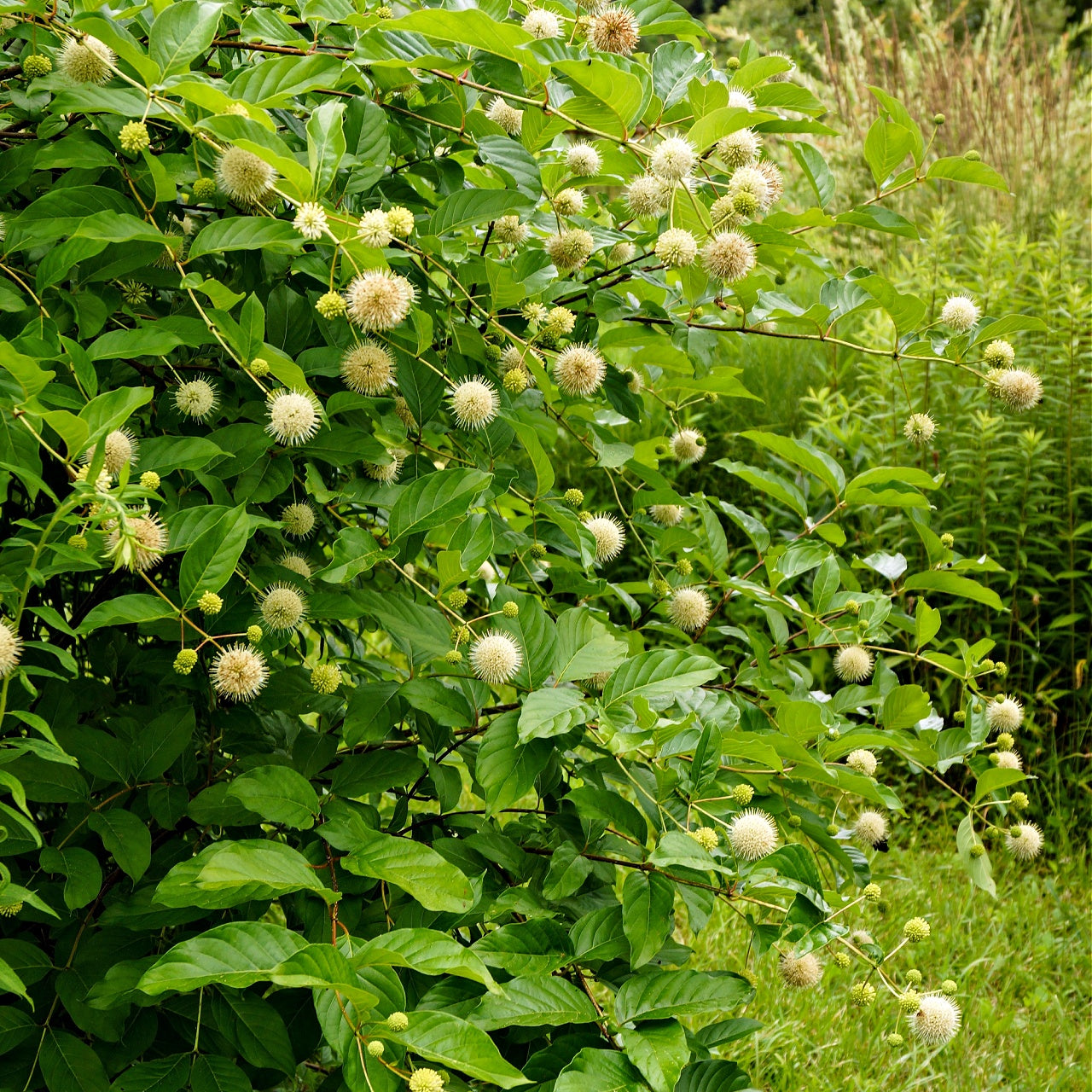Button Bush: A Native Shrub That Attracts Bees, Butterflies, and Hummingbirds
The Buttonbush (Cephalanthus occidentalis) is one of the best pollinator shrubs you can grow if you want to bring life and color to your yard. In summer, it opens into clusters of fragrant, globe-shaped white flowers that look like tiny pincushions. Each bloom buzzes with bees, butterflies, and hummingbirds, making it a living magnet for pollinators. Thrives along ponds, streams, and rain gardens, this wildlife-friendly native plant adds a natural charm to any landscape while nourishing the local ecosystem.
Environmental Benefits of the Buttonbush
More than just a pretty face, the Button Bush plays a vital role in wetland restoration and erosion control. This resilient North American shrub thrives in heavy clay and periodically flooded soils where other plants struggle. It naturally filters stormwater runoff, prevents soil loss, and supports biodiversity — making it ideal for sustainable landscaping and native garden designs. Its hardy, adaptable nature makes it a reliable choice for eco-conscious gardeners looking to combine beauty and function.
How to Grow and Care for Buttonbush
Plant your Buttonbush in full sun or partial shade, and keep the soil consistently moist. It thrives in wet conditions and grows vigorously near ponds, ditches, or low-lying areas. Once established, this shrub produces lush green foliage and long-lasting blooms from mid to late summer. Prune lightly in early spring to maintain a rounded form or encourage new growth. Whether planted as a specimen shrub or in a native habitat garden, the Button Bush rewards you with unmatched pollinator activity, water purification benefits, and natural beauty season after season.
Exposure
Button Bush thrives in full sun to part shade.
Height at Maturity
Over 10 Feet
Usage
Wetland
Shipped As
Bare-root
Ships
UPS
Planting Zones
5-9



